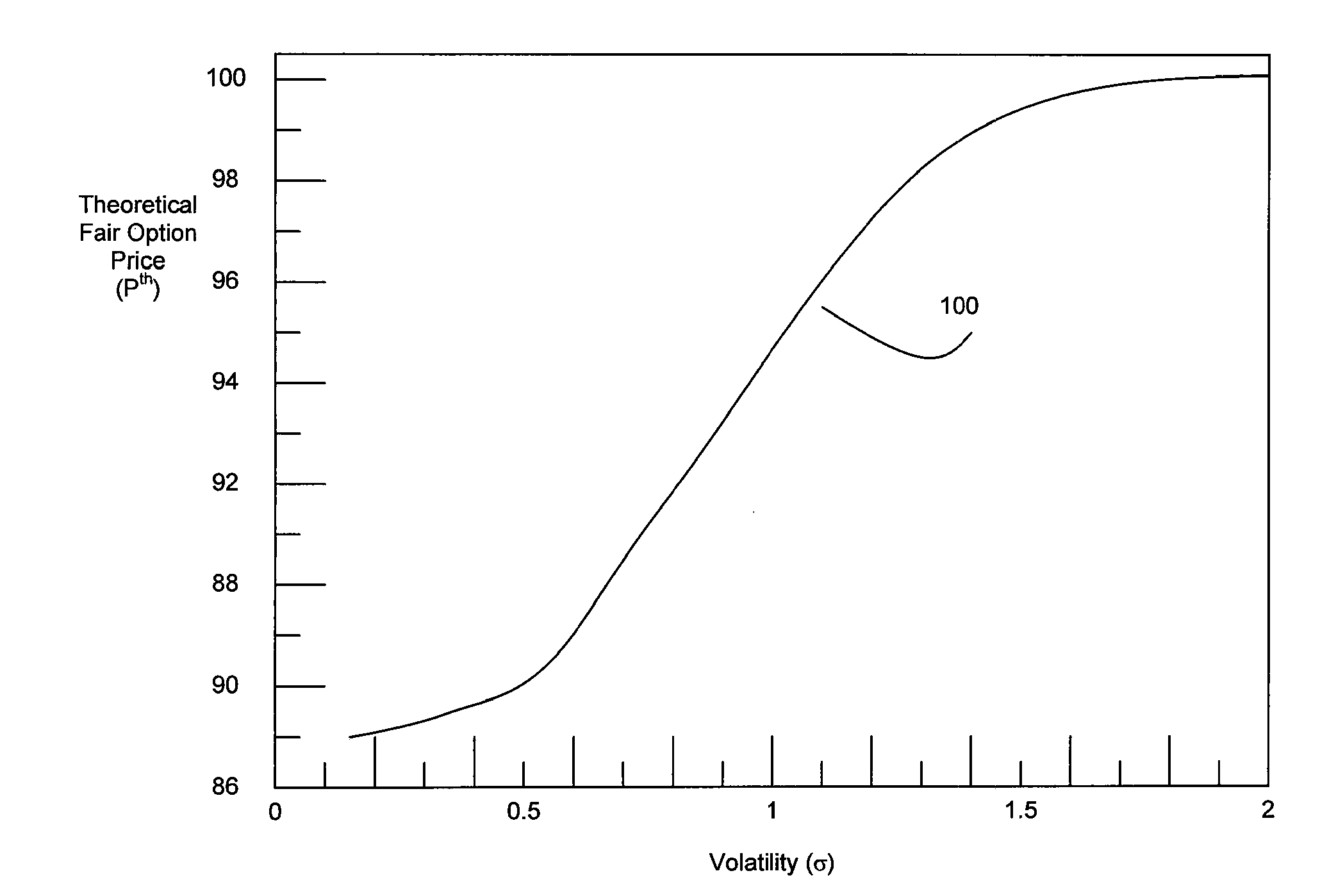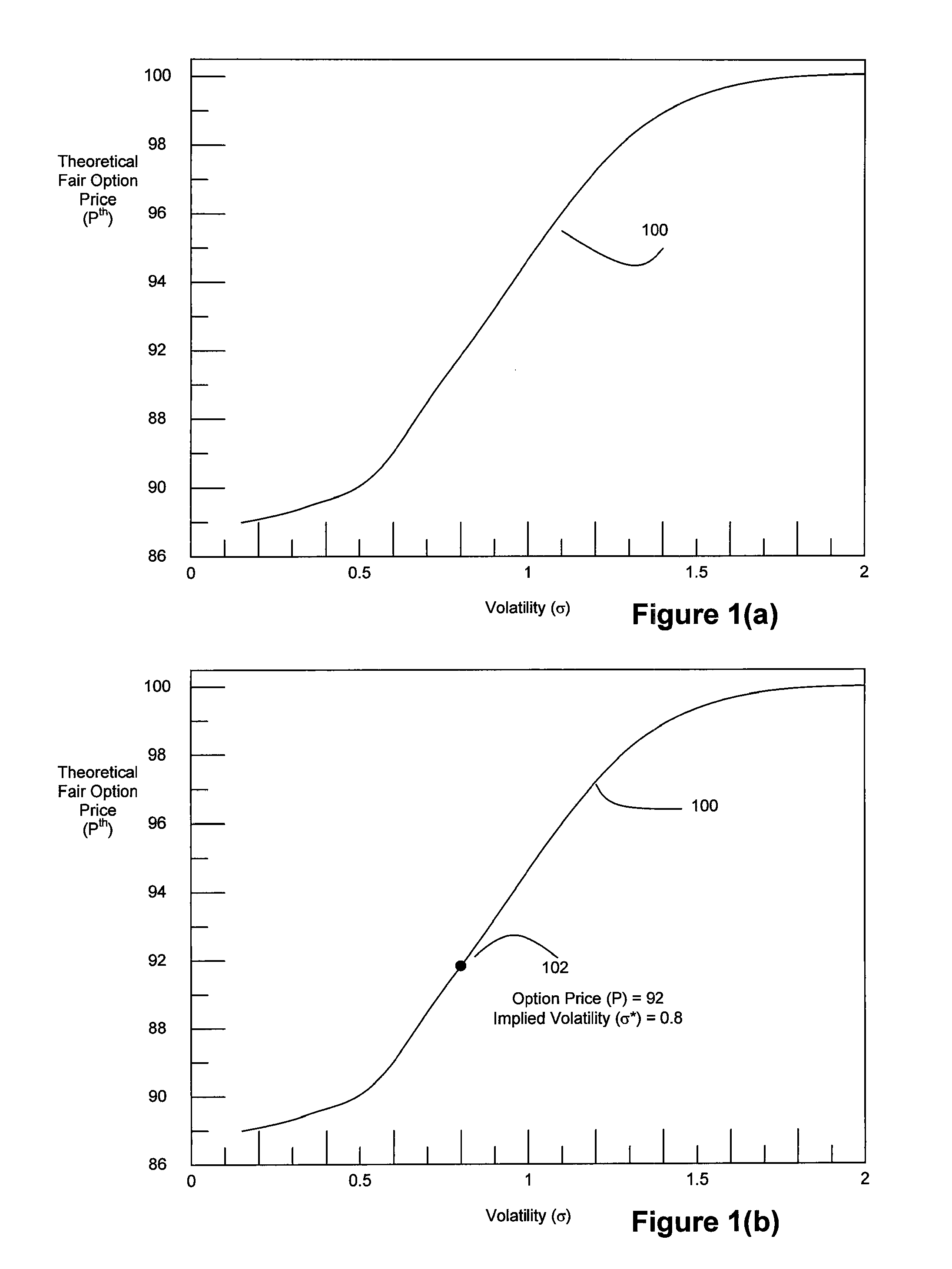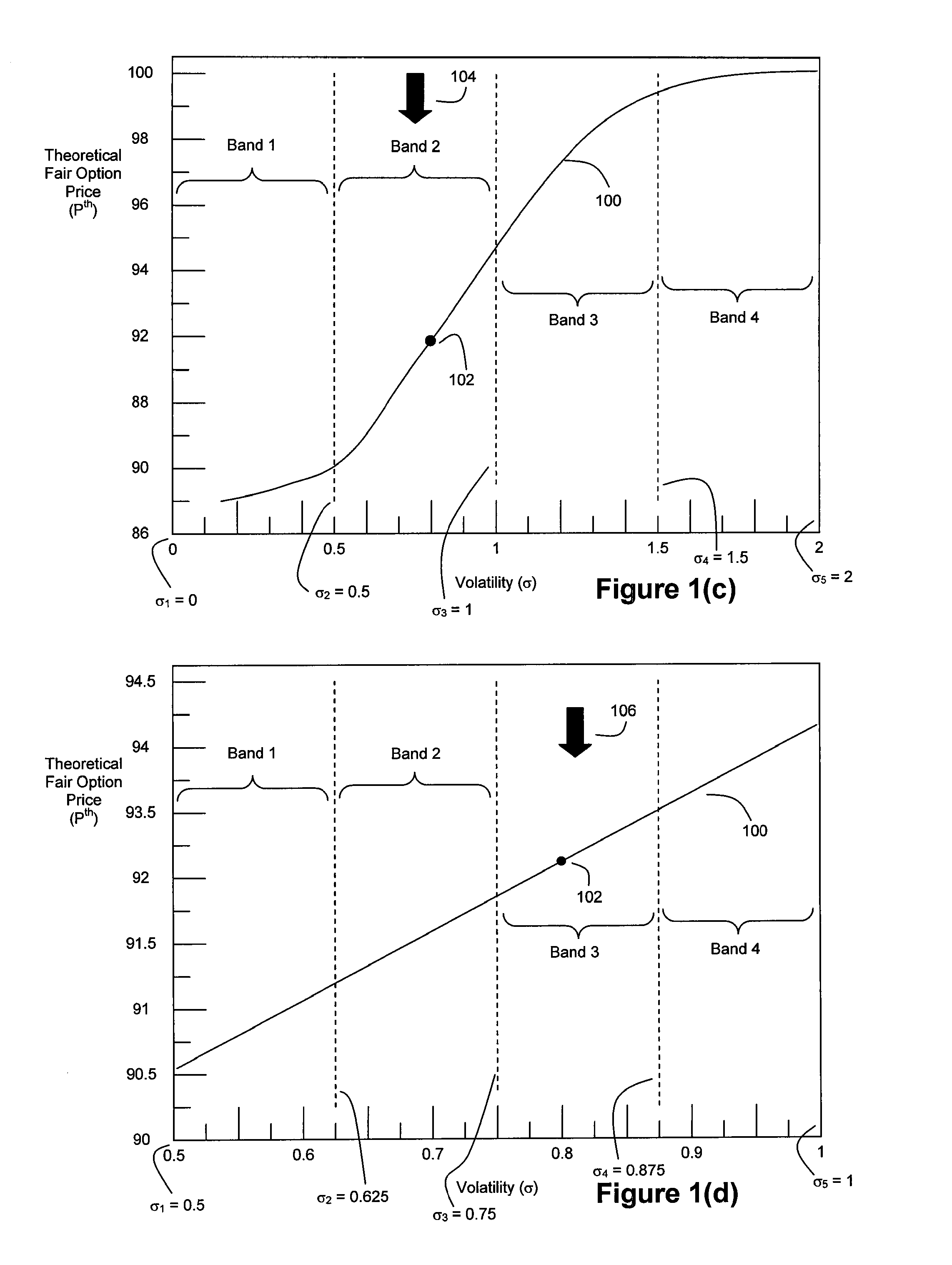Method and System for High Speed Options Pricing
a technology of option price and high speed, applied in the field of financial market data processing, can solve the problems of the complexity of factors affecting option price and option desirability, and the generality of the software executed on the general purpose processor (gpp) to compute analytical information for financial instruments. , to achieve the effect of reducing the delay of information delivery
- Summary
- Abstract
- Description
- Claims
- Application Information
AI Technical Summary
Benefits of technology
Problems solved by technology
Method used
Image
Examples
Embodiment Construction
[0062] In accordance with an embodiment of the present invention, it is desired to efficiently compute an option's implied volatility σ*. FIG. 1(a) is an exemplary plot 100 that illustrates how an option's theoretical fair market option price, computed using the CRR option pricing model, varies as a function of volatility. Theoretical fair market price refers to the price that should be assigned to the option to prevent riskless arbitrage opportunities, i.e., the option should be priced so that the potential option-holder cannot make a profit on it without taking any risk. Any of a number of option pricing models can be used to determine an option's theoretical fair market price, including but not limited to the CRR option pricing model, the Black-Scholes option pricing model, and other option pricing models, both those well-known to the public and those that are proprietary to traders and brokerage businesses. In this exemplary embodiment of the invention, the CRR option pricing mo...
PUM
 Login to View More
Login to View More Abstract
Description
Claims
Application Information
 Login to View More
Login to View More - R&D
- Intellectual Property
- Life Sciences
- Materials
- Tech Scout
- Unparalleled Data Quality
- Higher Quality Content
- 60% Fewer Hallucinations
Browse by: Latest US Patents, China's latest patents, Technical Efficacy Thesaurus, Application Domain, Technology Topic, Popular Technical Reports.
© 2025 PatSnap. All rights reserved.Legal|Privacy policy|Modern Slavery Act Transparency Statement|Sitemap|About US| Contact US: help@patsnap.com



